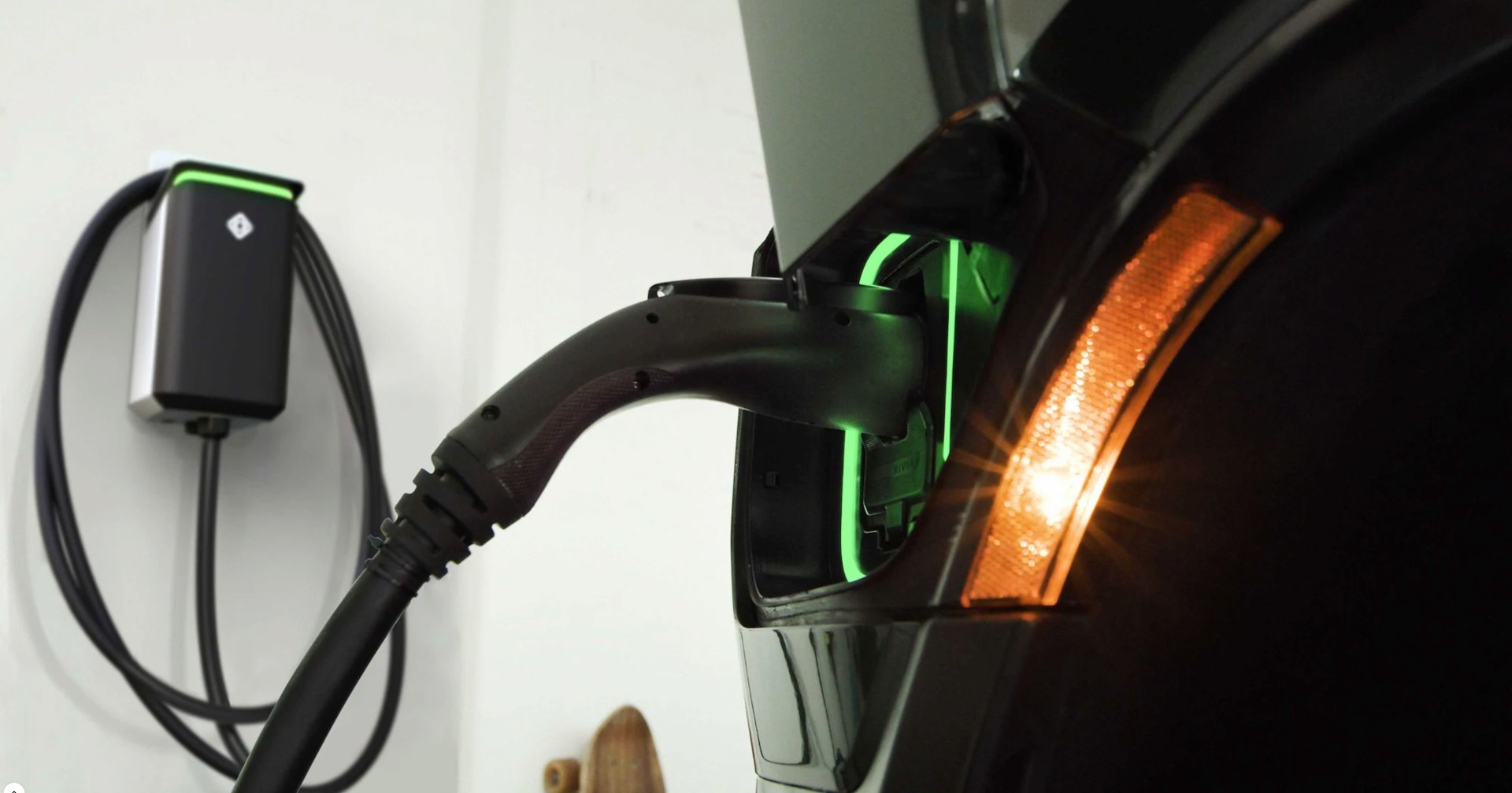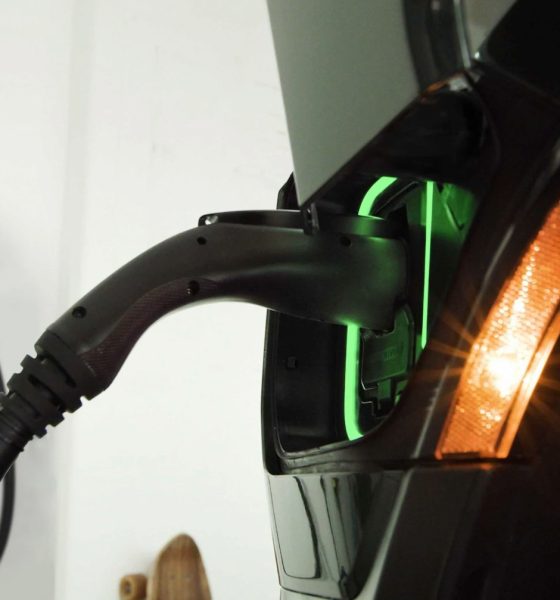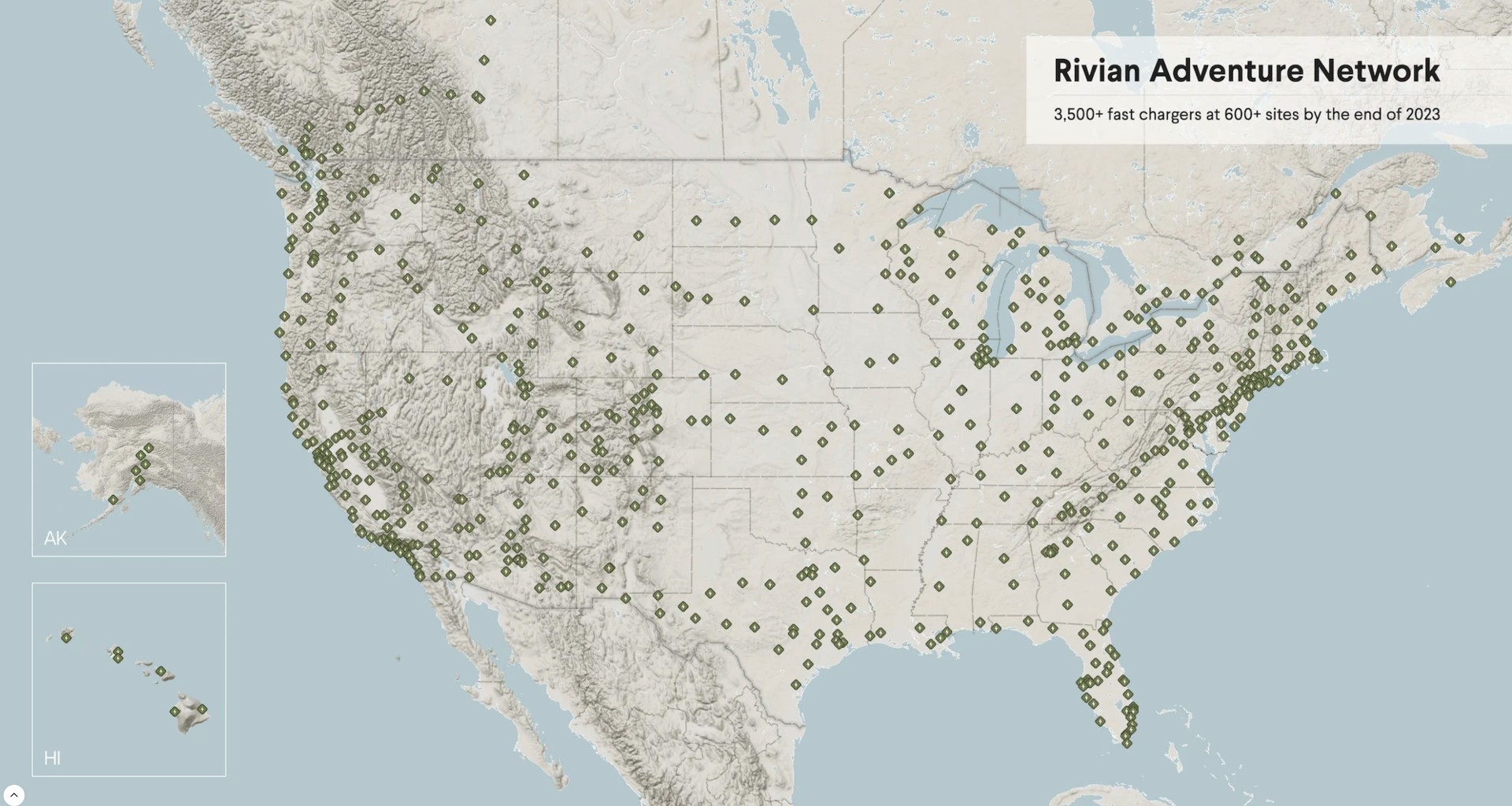

News
Rivian reveals the Adventure Network: 3,500 fast chargers, 600 sites by 2023
Rivian has officially revealed its charging infrastructure, known as the Adventure Network, in North America, and it’s pretty impressive. The automaker released a detailed map with all of its planned charging locations throughout the United States and Canada, featuring more than 3,500 fast chargers capable of 200 kW charging rates at 600 locations across the North American market by 2023. Some of the more traveled routes will have charging stations available on them later this year, the company said.
The Adventure Network will allow convenience, speed, and efficiency for Rivian owners as they begin to accept deliveries of either the R1T all-electric pickup or R1S all-electric SUV later this year. Rivian states that its charging infrastructure, much like Tesla’s, will be exclusive to owners. 140 miles of range will be available after just 20 minutes of charge time for either of its vehicles. Additionally, in-vehicle navigation systems will eliminate any questions or concerns by planning each stop along the route to the ultimate destination.
The Rivian Adventure Network is bringing DC fast charging to routes across the US and Canada — like along California’s Hwy 395 — with over 3,500 fast chargers at more than 600 sites by end of 2023. Visit our blog for details on all our charging solutions. https://t.co/nKBAZyeN7k pic.twitter.com/LuoTpgRATb
— Rivian (@Rivian) March 18, 2021
The charging infrastructure will also be powered by 100% renewable energy, making Rivian’s vehicles some of the most sustainable during the vehicle’s lifespan. Rivian has established partnerships with electricity providers and plans to utilize wind and solar energy to keep its infrastructure up and running. The automaker also said it would use Renewable Energy Certificates to ensure the car is powered by clean electricity.
Rivian’s strategy for rolling out the Adventure Network was simple: create fast charging options for owners so they can continue their adventures without spending too much time sitting in a charging stall. Rivian also strategically placed each charger along highly-popular routes and will be available later this year.
The company wrote:
“Los Angeles to Tahoe. Manhattan to the Adirondacks. San Francisco to Seattle. I-70 to The Rockies. Michigan’s UP via I-75. California’s Hwy 395. The entire Blue Ridge Parkway from Shenandoah National Park down to Great Smoky Mountains National Park. All these routes and more will begin opening this year.”
Rivian’s planned charging network will bring more than 3,500 charging stalls in at least 600 locations across the United States and Canada by 2023. (Credit: Rivian)
With an initial charging rate of 200 kW, Rivian plans to upgrade the sites to 300+ kW rates in the future. If accomplished, Rivian will have installed some of the most powerful electric vehicle chargers in the world, surpassing Tesla’s V3 Supercharger that operates at peak rates of 250 kW and provides up to 1,000 miles of range per hour.
To further solidify the availability of charging points throughout the region, Rivian is installing over 10,000 low-output Waypoint chargers available at shops, restaurants, hotels, parks, and other points of interest. The chargers will equip the standard J1772 plug and will be available for public use with any compatible vehicles. An 11.5 kW rate will charge the vehicle slowly but surely, as Rivian’s Smartphone application will give owners up-to-the-minute updates regarding their vehicle’s state of charge.
Rivian plans to begin delivering the R1T pickup in July, while the R1S will make its way to customers starting August 2021.

News
Tesla FSD fleet is nearing 7 billion total miles, including 2.5 billion city miles
As can be seen on Tesla’s official FSD webpage, vehicles equipped with the system have now navigated over 6.99 billion miles.

Tesla’s Full Self-Driving (Supervised) fleet is closing in on almost 7 billion total miles driven, as per data posted by the company on its official FSD webpage.
These figures hint at the massive scale of data fueling Tesla’s rapid FSD improvements, which have been quite notable as of late.
FSD mileage milestones
As can be seen on Tesla’s official FSD webpage, vehicles equipped with the system have now navigated over 6.99 billion miles. Tesla owner and avid FSD tester Whole Mars Catalog also shared a screenshot indicating that from the nearly 7 billion miles traveled by the FSD fleet, more than 2.5 billion miles were driven inside cities.
City miles are particularly valuable for complex urban scenarios like unprotected turns, pedestrian interactions, and traffic lights. This is also the difference-maker for FSD, as only complex solutions, such as Waymo’s self-driving taxis, operate similarly on inner-city streets. And even then, incidents such as the San Francisco blackouts have proven challenging for sensor-rich vehicles like Waymos.
Tesla’s data edge
Tesla has a number of advantages in the autonomous vehicle sector, one of which is the size of its fleet and the number of vehicles training FSD on real-world roads. Tesla’s nearly 7 billion FSD miles then allow the company to roll out updates that make its vehicles behave like they are being driven by experienced drivers, even if they are operating on their own.
So notable are Tesla’s improvements to FSD that NVIDIA Director of Robotics Jim Fan, after experiencing FSD v14, noted that the system is the first AI that passes what he described as a “Physical Turing Test.”
“Despite knowing exactly how robot learning works, I still find it magical watching the steering wheel turn by itself. First it feels surreal, next it becomes routine. Then, like the smartphone, taking it away actively hurts. This is how humanity gets rewired and glued to god-like technologies,” Fan wrote in a post on X.
News
Tesla starts showing how FSD will change lives in Europe
Local officials tested the system on narrow country roads and were impressed by FSD’s smooth, human-like driving, with some calling the service a game-changer for everyday life in areas that are far from urban centers.

Tesla has launched Europe’s first public shuttle service using Full Self-Driving (Supervised) in the rural Eifelkreis Bitburg-Prüm region of Germany, demonstrating how the technology can restore independence and mobility for people who struggle with limited transport options.
Local officials tested the system on narrow country roads and were impressed by FSD’s smooth, human-like driving, with some calling the service a game-changer for everyday life in areas that are far from urban centers.
Officials see real impact on rural residents
Arzfeld Mayor Johannes Kuhl and District Administrator Andreas Kruppert personally tested the Tesla shuttle service. This allowed them to see just how well FSD navigated winding lanes and rural roads confidently. Kruppert said, “Autonomous driving sounds like science fiction to many, but we simply see here that it works totally well in rural regions too.” Kuhl, for his part, also noted that FSD “feels like a very experienced driver.”
The pilot complements the area’s “Citizen Bus” program, which provides on-demand rides for elderly residents who can no longer drive themselves. Tesla Europe shared a video of a demonstration of the service, highlighting how FSD gives people their freedom back, even in places where public transport is not as prevalent.
What the Ministry for Economic Affairs and Transport says
Rhineland-Palatinate’s Minister Daniela Schmitt supported the project, praising the collaboration that made this “first of its kind in Europe” possible. As per the ministry, the rural rollout for the service shows FSD’s potential beyond major cities, and it delivers tangible benefits like grocery runs, doctor visits, and social connections for isolated residents.
“Reliable and flexible mobility is especially vital in rural areas. With the launch of a shuttle service using self-driving vehicles (FSD supervised) by Tesla in the Eifelkreis Bitburg-Prüm, an innovative pilot project is now getting underway that complements local community bus services. It is the first project of its kind in Europe.
“The result is a real gain for rural mobility: greater accessibility, more flexibility and tangible benefits for everyday life. A strong signal for innovation, cooperation and future-oriented mobility beyond urban centers,” the ministry wrote in a LinkedIn post.
News
Tesla China quietly posts Robotaxi-related job listing
Tesla China is currently seeking a Low Voltage Electrical Engineer to work on circuit board design for the company’s autonomous vehicles.

Tesla has posted a new job listing in Shanghai explicitly tied to its Robotaxi program, fueling speculation that the company is preparing to launch its dedicated autonomous ride-hailing service in China.
As noted in the listing, Tesla China is currently seeking a Low Voltage Electrical Engineer to work on circuit board design for the company’s autonomous vehicles.
Robotaxi-specific role
The listing, which was shared on social media platform X by industry watcher @tslaming, suggested that Tesla China is looking to fill the role urgently. The job listing itself specifically mentions that the person hired for the role will be working on the Low Voltage Hardware team, which would design the circuit boards that would serve as the nervous system of the Robotaxi.
Key tasks for the role, as indicated in the job listing, include collaboration with PCB layout, firmware, mechanical, program management, and validation teams, among other responsibilities. The role is based in Shanghai.
China Robotaxi launch
China represents a massive potential market for robotaxis, with its dense urban centers and supportive policies in select cities. Tesla has limited permission to roll out FSD in the country, though despite this, its vehicles have been hailed as among the best in the market when it comes to autonomous features. So far, at least, it appears that China supports Tesla’s FSD and Robotaxi rollout.
This was hinted at in November, when Tesla brought the Cybercab to the 8th China International Import Expo (CIIE) in Shanghai, marking the first time that the autonomous two-seater was brought to the Asia-Pacific region. The vehicle, despite not having a release date in China, received a significant amount of interest among the event’s attendees.








